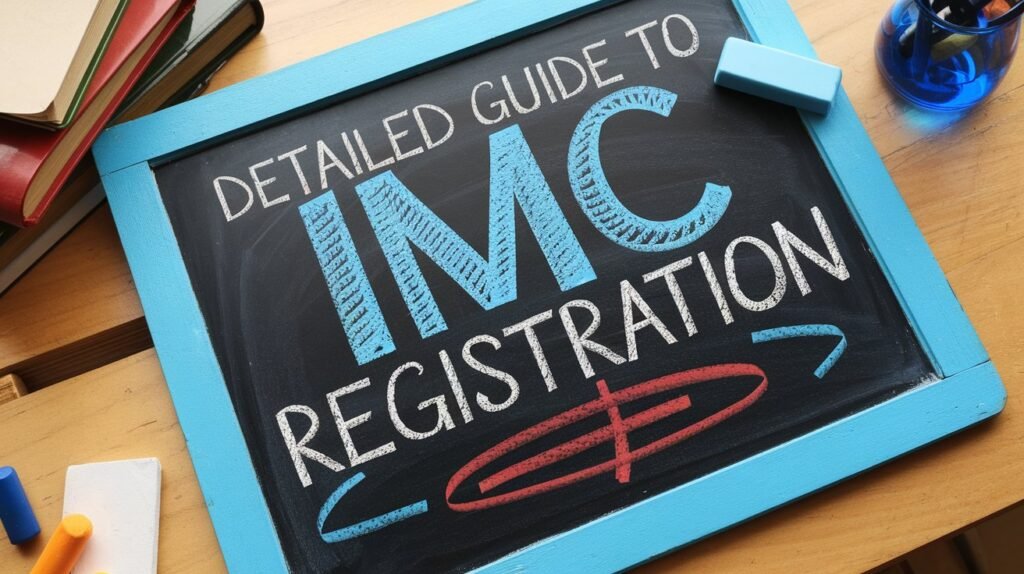OET Writing Test is a 45-minute professional-specific task that assesses the candidate’s ability to effectively communicate in writing within their specific healthcare profession. It evaluates their skills in organizing information, using appropriate language and tone, and conveying complex ideas clearly and accurately. Candidates are required to read a brief description of a healthcare-related scenario and then write a letter, typically addressed to a colleague, supervisor, or patient, responding to the situation presented. The letter must fulfill specific criteria, such as providing relevant information, addressing the recipient’s concerns, and demonstrating an understanding of professional protocols and standards. Overall, this task aims to gauge the candidate’s proficiency in written communication within the context of their profession, ensuring they can effectively communicate in real-world healthcare scenarios
In the Occupational English Test writing sub-test, there are three types of letters which show up in exams.
Referral
Transfer
Discharge
Depending upon the scenario, it would be the candidate’s assessment to judge the type and write the appropriate response. Although there are three types of letters which are asked all, have a similar approach.
The candidate’s response is assessed using the following criteria as described by the OET’s official website.
Purpose (Band score from 0 to 3)
Content (Band score from 0 to 7)
Conciseness & Clarity (Band score from 0 to 7)
Genre & Style(Band score from 0 to 7)
Organisation & Layout (Band score from 0 to 7)
Language (Band score from 0 to 7)
Purpose:
The fundamental part of the OET Writing sub-test is to identify the reason for the letter that will decide the letter’s goal, which will also be reflected through the Writing task and case notes and why the reader should be reading it.
The Writing task is located at the end of the case notes and will often include the type of letter you need to write as well as the letter’s main topic.
If the Writing task hasn’t given you all the information you need to understand the type of letter or the main topic, you can usually find it in the final section of the case notes (just above the Writing task).
This will be the beginning of our writing task, which requires the selection of correct grammar and indicators of the kind of language to signal the purpose of the letter.
This portion of the letter should be crisp and clear, explaining the purpose of the letter so that a reader doesn’t have to search for the important information delivered in this particular part. This is the purpose of the letter, which will later be expanded in upcoming paragraphs with relevant details.
Examples of some introductions are:
Example 1:
Thank you for seeing Mrs Priyanka Sharma, a type 2 diabetic, for further management of her blood sugar levels.
Example 2:
Mr Spencer has been a patient at this hospital for the past five weeks and will be discharged tomorrow. He requires your ongoing support and treatment during his rehabilitation.
Example 3:
Thank you for accepting Mr Dunbar into your care for the regular monitoring of his diabetes and encouragement to comply with his medication and dietary regimens.
Some other examples of introductions:
• Thank you for seeing/reviewing/providing…
• I am writing to (urgently) refer/transfer/discharge/update/request…
• Mr X, your (my) patient,/ Your (My) patient, Mr X…
Don’t make this mistake with ‘refer.’
One common mistake test-takers make is with ‘refer’. In the context of OET Writing, refer means:
• To introduce a patient to another healthcare professional for the first time.
When writing a reply to the professional who made the referral, candidates think the expression ‘refer back’ is correct, but it isn’t. It doesn’t make sense in English.
You cannot introduce someone for a second time. You cannot ‘refer back’. In this situation, updating the reader might be the reason for writing or discharging the patient back into their care.
Some verbs that are useful and specific to the type of letter asked are
• Transfer
• Discharge
• Update
• See
• Accept
• Request
• Provide
• Recommend
The expansion of the purpose with relevant details is as important as the purpose itself.
Some examples are:
Example 1:
Further management of her blood sugar levels, ongoing support and treatment, and regular monitoring of his diabetes.
Example 2:
Her non-fasting blood sugars are 7-8mmol/L, but her fasting blood sugar levels are usually in the 16+ range, which is high. Therefore, I am referring her to you for your specialist advice.
Example 3:
Prior to this injury, he received home help for all house cleaning tasks and was independent in all personal care and community tasks. He is keen to return home, where he lives alone and maintain his independence.
Example 4:
He was diagnosed with atrial fibrillation on the same admission and was subsequently prescribed warfarin and sotalol. His hypertension is controlled by Ramipril. As with his other medication, Mr Dunbar is intermittent in his compliance.
Content:
Accurately delivering the information is crucial to continue caring for the patient, which will be represented by the transformation/ summarisation or paraphrasing of relevant case notes into complete and meaningful sentences, keeping the meaning the same.
The letter’s content would describe the relationship between the patient and the reader and what aspect of the patient’s care would be involved with the reader.
Example 1:
• A hospital Occupational Therapist writes a letter discharging patient Jack Spencer to the Occupational Therapist at the Care Centre, where he will receive rehabilitation.
In this situation, the reader and the patient do not have an existing professional relationship, so the letter will need to include information about the patient’s current abilities and inabilities for the reader to get a clear understanding. Although the case notes provide details of the patient’s children, grandchildren, job (before he retired) and financial status, these details will not be needed for the reader because they will not impact the care they provide.
Example 2:
• The hospital Occupational Therapist was writing a letter to the patient’s regular GP to update them on their progress.
In this example, the information provided would change. While the patient’s social history is still not necessary, the details provided about the patient’s current abilities and inabilities would also be altered. The letter would need to provide an update about how these have changed since the GP last saw the patient rather than present as new information.
The specific and relevant content ensures that the reader has a clear understanding of the situation.
Conciseness and Clarity
This mates with the content part of the OET Writing sub-test as many of the skills and strategies applied or needed to achieve high scores are similar.
The case notes have extensive information about the patient that is not required all the time to be described. This assesses the candidate’s ability to identify irrelevant information that should be left out. The skipped notes could be repeated information or information not relevant to the desired care of the patient to the reader.
Some common mistakes made by the test-takers are:
• Including irrelevant beyond the scope of care or already known information to the reader.
• Providing too much background or historical detail to the current situation.
• Not grouping similar information together.
Example 1:
Information not needed for care
Mrs Asma’s case notes cover 6 visits to her GP over a two-month period. The first visit mentions this detail:
13/05/21
Discussion: Concerned that her glucose levels are not well enough controlled – checks levels often (worried?) Attends health centre – feels not taking her concerns seriously
The OET Writing task/test is to write a letter referring the patient to the endocrinologist. We can break this case note into what is and what is not relevant to the endocrinologist.
• Relevant: Mrs Asma is concerned that her glucose levels were not well controlled, causing her to present on the 13 May.
• Not relevant: Mrs Asma felt the health centre was not taking her concerns seriously.
Mrs Asma’s feelings on the health centre are outside of the endocrinologist’s role. It does not have any impact on the assessment or treatment they will provide her.
A good summary of this case note would be:
• She initially presented on 13/05/21, concerned that her blood sugar level was no longer well controlled.
Example 2:
Too much historical detail
Avoiding unnecessary or repeated information is also an important part of this criterion. In many sets of case notes, multiple visits to or by the patient will be reported.
Some of the information in the earlier visits will have been superseded by how the patient’s condition progressed. Summarising the information to only include the details which remain relevant is therefore important.
Mr Akram’s case notes cover his medical presentation:
Admitted to hospital with R fractured humerus & olecranon process following fall at home. Surgery was completed on the olecranon process; screw was inserted 3 wks ago.
This task is to discharge the patient into the care of an Occupational Therapist (OT). Once again, we can break the information into what is and what is not relevant:
• Relevant: Mr Akram’s injuries were a right fractured humerus & olecranon process
• Not relevant: The type of surgery.
The OT needs to know what injuries the patient sustained because it will help them correctly care for Mr Akram. However, details of the surgery are not relevant as they will not impact the type of care provided post-discharge.
An example of a clear summary is:
• Mr Akram had a fall at his home and sustained a fracture to the right humerus and olecranon process. Surgery was completed three weeks ago.
Example 3:
Grouping similar information in your letter
The last element of this criterion is to group similar information together for the reader.
Grouping information will help your summary be quick and easy to read, ensuring your reader doesn’t have to re-read the letter to understand it.
For example, patient Mr Charlie’s case notes record he is non-compliant with his diet and medication and that this is discussed with him on 3 separate visits, including:
March 2020
Non-compliant with diet. Non-compliant with medication. Blames poor memory
October 2020
Resumed medications but still only taking them intermittently. Again, provided education on the importance of
adherence to drug regimen
The task is to transfer the patient into the care of the Community Nurse in the area where he will be moving to. The Community Nurse is requested to provide ongoing monitoring.
• Relevant: Mr Charlie’s medication and diet compliance need monitoring
• Not relevant: The frequency or specific dates when the patient has been recorded as non-compliant
A good summary of these case notes would be:
• He has not been compliant with his diet or medication regimen, reporting poor memory as the primary cause of his neglect.
Genre & Style
The Writing sub-test of the OET requires a formal letter, evaluating the candidate’s ability to employ correct grammar, punctuation, and maintain a professional tone throughout the letter.
Test takers are anticipated to utilize formal language when communicating from one professional to another or even from a professional to a patient.
Avoid using note form, and be sure to expand the relevant notes into complete sentences.
Example:
Informal:
• Thanks for having a look at Jia
• I’ve referred her to you because she’s interested in managing her weight.
These phrases utilize the patient’s first name and show respect for her situation.
Formal:
• Thank you for seeing Ms Jia Houssain
• I am referring her to you for your specialist advice.
Avoid making judgements; instead, use facts.
Example:
• She writes with her left hand and drove a manual car before the fall.
• The individual utilizes their iMac regularly and transports a bulky laptop to and from their residence. When discussing a patient’s lifestyle preferences, it’s preferable to rely on factual descriptions rather than employing potentially judgmental language.
Judgement:
• Mrs X is a heavy smoker
• Mr Y is a binge drinker OR Mr Y is an alcoholic
• Mrs Z does not exercise enough
Fact-based:
• Mrs X smokes 30 cigarettes a day
• Mr Y avoids drinking in the week but drinks 17 units of alcohol on an average weekend
• Mrs Z admits she is only physically active once every 4-months.
Use a formal tone from the very beginning of the letter, which will leave the right impression at the end, while remaining formal at the end, too.
For example:
• Feel free to reach out if you need any additional information or assistance.
• Thank you for your continued management of this patient.
This shows your appreciation for their involvement.
Examples:
Informal
o Sincerely
o Thank you
o Regards
Formal
• Yours sincerely (If we start the letter with ‘Dear Dr Jeff’ or ‘Dear Ms Natalia)
• Yours faithfully (If you do not know the name of the person we are writing to but instead have their job title. For example, if we start the letter ‘Dear Dentist’ or ‘Dear Nursing Manager’, then we end the letter with ‘Yours faithfully’)
Kindly note: It is preferred to use the reader’s job title for healthcare letters rather than more generic Sir/Madam.
Avoid contractions, as they are being considered as informal.
Example:
Informal
• They’re keen to return home.
• She’s looking forward to holding her baby.
• I didn’t follow the care plan correctly.
Formal:
• They are keen to return home.
• She is looking forward to hold her baby.
• I did not follow the care plan correctly.
The use of Abbreviations should only be accounted at the relevant readers.
For Example:
Reader: Endocrinologist
• Mrs Sharma was diagnosed with NIDDM in 1999.
As you are writing to an endocrinologist, this abbreviation would be very familiar, and the condition is central to the patient’s reason for seeing them, so it’s appropriate to abbreviate. For an orthopaedic surgeon, perhaps, the abbreviation is less appropriate. Any mention of the condition, because it may have some impact on the treatment the patient receives, should, therefore, be in full form.
Reader: Community Nurse
• He was diagnosed with atrial fibrillation
There is more than one abbreviation used globally for Atrial Fibrillation: AF or AFib. As a result, it’s best to use the full form of this condition rather than abbreviating it.
If you think your reader might not know what the abbreviation is, it’s best not to abbreviate; otherwise, it will interrupt their reading.
Organisation & Layout
Any writing that is organized and properly laid out will always have a positive impact on the reader, as In the OET Writing task too.
Another important point to consider is that since every writing task is different, so, every letter will be organized differently.
It assists evaluators in determining whether your structure facilitates or complicates reader comprehension.
After selecting all information from case notes to include and not include, decide in what order you will expand and present the information. This organization can be thematic or chronologically arranged.
Chronologically
The most straightforward method to structure the letter is chronological, beginning with the initial events and progressing to the present moment.
In this, the writer uses dates at the start of each paragraph to separate the details. By doing this, the information is formed into a timeline that is clear to the reader and easy to follow.
Thematically
In this method, the most important information is put first.
Please note: You can add as many paragraphs as you consider necessary to clearly communicate the information to the reader. The paragraphs should be structured in the clearest order for the reader so that the important details don’t get hidden within the section.
The same goes for the sentences. The sentence containing the most important information for that paragraph comes first, the next most crucial sentence comes in second and so on.
Language
This is the application of Grammar, Vocabulary, Punctuation and Spelling to the OET Writing task.
Grammar
Use appropriate connectors
• Simple connectors (called conjunctions): and, but, or.
• Complex connectors: however, therefore, although, unless, subsequently.
Some connectors are not suitable for letter writing. These include:
• Academic connectors: furthermore, moreover
• Informal connectors: besides, meanwhile, so.
Avoid when a sentence still makes sense without a connector:
For Example:
• Furthermore, Mrs Jones will need to attend a follow-up appointment in 3 days’ time.
Instead, you could simply write:
• Mrs Jones will need to attend a follow-up appointment in 3 days’ time.
When to use the passive voice?
The passive cannot be used with all verbs.
In healthcare, verbs relating to natural processes such as healing cannot be used as part of the passive form:
Wrong – His wound was healed by regular dressing changes.
Correct – His wound has healed, OR His wound is healing well due to regular dressing changes.
Other healthcare verbs that cannot be used in passive form include improve, deteriorate, and rise.
Can you correct the sentence below, misusing the passive form to a correct sentence?
Wrong – Her condition deteriorated on admission.
What’s an example of a relative clause?
Take a look at the two examples of a relative clause below:
For example, Mrs Singh, who was admitted yesterday via ambulance, will be discharged home today.
Example 1:
The wound on Miss Delarue’s leg, which has been treated with sulfasalazine dressings, is healing well.
These two examples are called ‘non-defining relative clauses’ because they add some exciting but non-essential information to the rest of the sentence. To show the information is non-essential, commas are at either end of the clause.
To know if you have put the commas and the information into the sentence correctly, you should be able to read the rest of the sentence with the commas and information removed and it will still make sense. In our examples, it would leave these as the remaining sentences:
For example, Mrs Singh will be discharged home today.
Example 2:
The wound on Miss Delarue’s leg is healing well.
There’s another type of relative clause to learn about
There is also a defining relative clause. This type of clause adds essential extra information to a sentence. Extra information is not separated from the rest of the sentence by commas for this reason.
Some examples include:
For example, the occupational therapist who visited Mr Mahmoud’s home will provide you with their report.
Example 3:
The medication that the patient’s GP had previously prescribed has been changed following surgery.
In both of these examples, the defining clause is underlined and provides more information about the noun in front of it. The information helps the reader understand this noun more clearly.
In the first example, the defining clause clarifies which OT the writer means. In the second example, the defining clause clarifies which of the patient’s medications is being described.
Relative pronouns
In all these examples, you will notice certain important words called relative pronouns: who, which and that.
• Who can describe people (Mrs Singh, the OT)
• Which can describe things (the wound, the medication)
• That can describe both things and people.
So, when should you use relative pronouns?
The most effective use of relative clauses is to combine 2 pieces of information into 1 sentence.
The first example I showed you came from 2 sentences:
First sentence: Mrs Singh was admitted via ambulance yesterday
The second sentence is that Mrs Singh will be discharged home today.
By using a relative clause, you can avoid the repetition of Mrs Singh and provide the information more clearly to the reader. Look out for information in case notes, which would be repetitive if you wrote it in 2 sentences and combined it into 1 with a relative clause.
Finally, a good understanding of relative clauses will make you a better reader as you can pick out when the writer is adding non-essential information to the sentence, separated by commas and when the details need to be read together.
Vocabulary
It shapes how you communicate with the audience of your Writing and Speaking sub-test.
Demonstrating a range of appropriate vocabulary in your writing and speaking will make you stand out from other candidates and impress your assessors.
Should medication names have a capital letter?
1. Generic drug names do not need a capital letter
• aspirin
• metformin
• metoprolol
• diazepam
• fluconazole
2. Brand names for drugs do need a capital letter
• Panadol
• Zyrtec
• Tylenol
• Claritin
• Eurax
Punctuation
Punctuation adds clarity to OET writing. It can help you better communicate your message to the reader.
Some examples of candidates’ concerns regarding vocabulary are when and how to use it properly.
Simple and clear
For example: “he takes metformin, atorvastatin and lisinopril”.
Complex and not clear
For example: “he takes metformin, 1000mg with his evening meal, lisinopril, 20 mg and atorvastatin, 30 mg both once daily”.
Complex and clear
He takes metformin, 1000mg, with his evening meal; lisinopril,20 mg and atorvastatin,30mg, once daily.
Spelling
Spelling is important in Writing, but you won’t need to be perfect to achieve a B. However, some misspelt works will stand out more than others.










